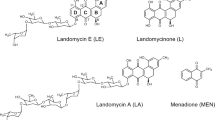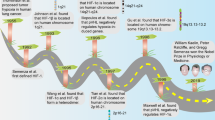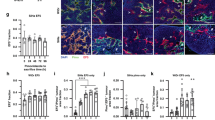Abstract
The effect of radiosensitization of hypoxic bacterial cells by 9 nitroimidazoles was measured in the bacterial strains E. coli AB 1157 and S. lactis 712. Seven of these compounds were similar to misonidazole in their redox properties, but differed widely in their lipophilicites. The dependence of sensitization enhancement on reduction potential was similar to that reported in mammalian cells. The efficiency of sensitization was similar for compounds of low lipophilicity, but increased if the octanol: water partition coefficients of the compounds were higher than about 3.5. With one compound, otherwise similar to misonidazole, the increased lipophilicity led to about one order of magnitude lower concentration achieving the same degree of radiosensitization.
This is a preview of subscription content, access via your institution
Access options
Subscribe to this journal
Receive 24 print issues and online access
$259.00 per year
only $10.79 per issue
Buy this article
- Purchase on Springer Link
- Instant access to full article PDF
Prices may be subject to local taxes which are calculated during checkout
Similar content being viewed by others
Rights and permissions
About this article
Cite this article
Anderson, R., Patel, K. Effect of lipophilicity of nitroimidazoles on radiosensitization of hypoxic bacterial cells in vitro. Br J Cancer 39, 705–710 (1979). https://doi.org/10.1038/bjc.1979.124
Issue Date:
DOI: https://doi.org/10.1038/bjc.1979.124
This article is cited by
-
Dose-dependence and related studies on the pharmacokinetics of misonidazole and desmethylmisonidazole in mice
Cancer Chemotherapy and Pharmacology (1980)



